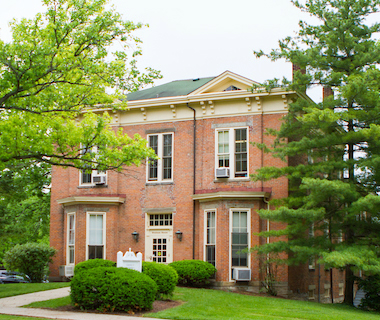
50th Anniversary of Two Miamis
Representatives from both the Tribe and the university took part in an emotional commemoration of the partnership on Wednesday, Nov. 9, during the “The Two Miamis: 50th Anniversary Celebration” at Millett Hall.

Every two years, the Myaamia Center hosts a day-long Myaamiaki Conference at Miami University.
The Conference serves as a way to educate the Miami University and Miami Tribe communities about the research being completed at the Myaamia Center.
University faculty, staff, and students attend the Conference, which also attracts Miami Tribe members from across the country. It is streamed online for those who cannot attend the conference in person.

Representatives from both the Tribe and the university took part in an emotional commemoration of the partnership on Wednesday, Nov. 9, during the “The Two Miamis: 50th Anniversary Celebration” at Millett Hall.


More than 400 Miami Tribe citizens and campus community members gathered on Miami University’s Oxford campus on Oct. 11 for a Day of Reflection commemorating the 175th anniversary of the Miami Tribe’s removal from their homelands.
The solemn program began in the Art Museum Sculpture Park, where Miami Tribe of Oklahoma Chief Douglas Lankford spoke about the effects of the removal, and the hurt and loss it caused.
